Barkhor Street is one of the most famous of all places to go shopping in Lhasa. This circuitous street, that encompasses the world famous Jokhang Temple, is the best place to go to get authentic, local-made souvenirs from Tibet. One of the oldest streets in Lhasa, Barkhor Street was developed along with the Jokhang Temple in the early part of the seventh century. Originally just a path around the temple, trodden by the weary feet of the thousands of pilgrims who came to pray at the magnificent temple built by the first Tibetan King, Songtsen Gampo, the route itself is full of cultural and religious significance. With a history going back over 1,300 years, Barkhor Street is now a major part of the culture and religion of Lhasa and Tibet, and plays an important role in Tibetan Buddhism.
Originally one single road that encircled the temple, the street has now been set into a normal city-block style, and now comprises of four streets; Barkhor East Street, Barkhor West Street, Barkhor North Street and Barkhor South Street. The street retains the old appearance of Lhasa, and the people there live and work in the old, traditional ways.
The surface of the street is made from hand-hewn blocks of stone, lain down to form flat cobblestones, with huge censers, or incense burners, in the middle, which burn all day and night. It contains over 120 stores for local handicrafts, and over 200 small stalls or booths selling locally made goods. In total, there are over 1,300 businessmen that work along the street, and you can find over 8,000 types of goods can be bought there.
Many of the merchants sell local handicrafts, such as carpets, Pulu (the traditional Tibetan fabric woven from wool and used for clothes, boots, and hats in rural areas), Tibetan knives and swords, hats, traditional Tibetan costumes, ornaments, wooden bowls, and many more. You can also find tasty Tibetan foods, and their delicious, sweet tea.
Cultural and Religious Significance
Barkhor Street has a major religious significance in the whole of Tibet, not just in Lhasa. People come from all over the region, and indeed, all over the world, to circumambulate the holy kora around the sacred Jokhang Temple and the Muru Nyingba Monastery. The monastery is a small Buddhist monastery that sits between Jokhang and Barkhor, and was the former local seat of the Nechung Oracle in the 17th century. It lies behind Jokhang, to the east, and can be accessed from Barkhor North Street.
As the street surrounds Jokhang Temple, it is the route that is taken by pilgrims when walking the holy kora around Jokhang. At any time, you can see pilgrims and locals alike walking clockwise around Barkhor Street, often prostrating themselves on the ground as they make the circuits, before kneeling in prayer outside the main doors of the temple.
Jokhang Temple is the most holy and religious place in the city, and one of the most religious in the entire region. Tradition dictates that circling holy sites must be done in a clockwise direction, and at Jokhang, it must always be done an odd number of times, such as three, five, seven, etc. With this electrifying atmosphere of religious significance, Barkhor Street has a vibe that is unique in the world, and as a tourist spot, is on a level above anywhere else.
Culturally, Barkhor Street exudes an exoticism that is unique to Lhasa tour. Along this street, you can find people from all parts of Tibet, living in the way they always have, and making their crafts using traditional methods, some of which date back over two thousand years. One of the most common sights that you can see in the morning is of people circling the temple, and prostrating themselves, and some even do the whole circuit by prostration, as they believe that they can accrue more spiritual attainment this way. Joining the pilgrims as they walk around the street, you get a real feeling of connection with the place, and it is an experience not to be missed.
The culture of the entire region can be found in the crafts and artifacts along Barkhor Street, from yak butter to saffron, and wooden bowls to prayer beads. However, even though the street is busy and swinging most of the year, and even has markets that run all night selling local commodities for those who do not sleep, during the period of the Tibetan New Year the street has no merchants or vendors at all.
The shops around Barkhor Street sell almost anything you can think of from Tibet tour. While the complete list of saleable wares is too long to list, there are some that deserve a mention, for their cultural or religious significance.
DorJe
While at first glance, the Tibetan DorJe may resemble some form of weapon; it is in fact a religious object of major significance. Symbolically, the DorJe represents the “thunderbolt of enlightenment”, the abrupt change of consciousness that allows the enlightened to detach themselves from their worldly belongings. In Tibetan Buddhism, the DorJe is commonly used with a Bell, both of which are used in Buddhist ceremonies. The Bell is held in the left hand, and the DorJe in the right hand, and symbolizes the thunderbolt and the diamond. In ceremonies, the bell is normally struck with the DorJe.
Saffron
Saffron is one of the most expensive of all the herbs and spices, and has been a major part of Tibetan culture and medicine for over a thousand years. Not only was it one of the main food spices that were transported along the old Spice Routes, it has many medicinal properties. Known in Tibet as gur-gum, it is used in incenses to aid breathing, in tea to stimulate the digestive system and reduce the pain from colic and other stomach disorders, and is being researched for its use in treating cancer. Harvested from the stigma of the Crocus Sativus flower, it takes around 8,000 flowers to produce just 100 grams of the spice.
Delicate Tibetan Jewelry Box
Tibetan jewelry boxes are normally made of brass or silver, and often have handcrafted yak bone inlay or jade or precious gems set into the lids. They are ornately crafted with delicate, often religious designs, and come in a huge variety of shapes and sizes. While most that are sold in the bazaars are replicas, or made of tin and brass, with plastic instead of bone, there are some places in Barkhor Street where you can still buy authentic Tibetan jewelry boxes, although they are expensive.
Tibetan Wooden Bowl
In Tibet, wooden bowls play an important part in the culture as well as people’s everyday lives. Every family in Tibet has wooden bowls, and in each family, there are traditionally two sizes of bowls. The larger bowl would be for the father, the head of the house, while the smaller bowl is for the mother. Even pilgrims traveling to holy sites will always carry a wooden bowl with them. They are used for drinking tea and eating Tsampa and other foods.
It is believed to be a sign of ill luck if your bowl has a crack in it, and it must be replaced. Wooden bowls abound in Tibet, and are hand carved by local carpenters and can be bought for a low cost. They are even an important part of the sky burial ceremony, and are used to lay in front of the dead person and filled with tea, to wish the person a good voyage to heaven. After the ceremony, the tea is poured out of the bowl, and customarily, it then belongs to the priest who performed the ceremony. For a family who want to keep the bowl, they must buy it back from the priest.
Exotic Snuff Bottle
Snuff bottles have been used throughout Asia for around 400 years, especially in China, Tibet, Mongolia, and Bhutan. Snuff, a form of finely powdered tobacco, was considered to be a remedy for common illnesses such as colds and stomach disorders, and was introduced into Asian cultures during the Qing Dynasty in the mid-16th century.
Smoking tobacco at the time was popular in pipes prior to the Qing Dynasty, who made smoking illegal. The use of snuff spread through the upper classes, and soon the small, ornate bottles replaces the western-style snuff boxes. Snuff bottles soon became a way to represent status and wealth, and were often made from gold and silver, inlaid with many precious gems.
Contemporary snuff bottles are still being made in Tibet and China, and can be found in most markets and bazaars, although an original Qing Dynasty snuff bottle would be a desirable object for a collector or a museum. They were made to be held in the hand, so normally have a pleasant, tactile quality.
Prayer Wheel
Tibetan prayer wheels, known as “Mani”, are cylindrical devices on a central spindle that are used for spreading spiritual blessings and well-being in Tibetan Buddhism. Thin rolls of paper or papyrus are written with ancient Buddhist scriptures and prayers, and are wound into the cylindrical drum that acts as a protective container for the prayers. This drum sits on a spindle axis, and can be spun by hand repeatedly. Normally, larger, decorative scripts are also carved into the outside of the drum.
Tibetan Buddhists believe that spinning the prayer wheel has the same effect as orally reciting the prayers or mantras, and many Tibetans have their own prayer wheels for when they walk around a holy kora. And just like the kora, the prayer wheels must be spun in a clockwise direction.
Auspicious Hand-made Diamond Knot
The Diamond Knot, also known as the Eternal Knot, is one of the Eight Auspicious Symbols of Tibetan Buddhism. It represents an important marker in places that are largely influenced by Buddhism, such as Tibet and Mongolia, and is often used in Chinese Knots and Chinese artwork. Knots like this are often used in traditional Tibetan crafts, to make pendants, decorations, and bell-ropes.
Millettia Bracelet
Millettia bracelets are made from the plant, millettia laurentii, which is a type of vine that grows in the sub-tropical areas of the Tibetan Plateau. As a vine, the wood can be easily steamed to bend it into a bracelet shape, and they are often decorated with string and beads. The vine is naturally strong, and the bracelets can be worn for years, and are believed to help with healing of the body. The more you wear the bracelets, the smoother and shinier they become, as they absorb the natural oils of the skin, which gives them their smooth, sleek texture. Millettia vines are often used in ancient Chinese medicines.
Tibetan Furniture
Traditional Tibetan furniture is normally carved of wood, and comes in the form of a cabinet or cupboard. The cabinets are exquisitely decorated with flowers and Buddhist symbols, and one can often see the face or image of Buddha inlaid into the wood. The decoration of the cabinets is done using thin strips of colored woods, known as marquetry. The thin wood veneer is cut into shapes by hand, and then glued onto the pattern on the cabinet. A single image can be made up of several colors and hundreds of pieces of thin veneer.
Buddhist Prayer Beads
Buddhist prayer beads, or malas, are normally used to count the number of mantras that have been recited, the number of breaths while meditating, counting the number of prostrations, or how many repetitions of a Buddha’s name. Traditionally, Buddhist prayer beads have 108 beads on the string, which signifies the number of mortal desires of humankind. A decorative tassel or an auspicious Eternal Knot is attached to the beads, and some will have talismans or amulets added, depending on the local traditions.
Often found hanging around the wrists and hands of Tibetans, these prayer beads are known as “trengwa” in Tibetan. When reciting mantras, the beads are often used to count the number of recitations, and help serve to focus and calm the mind. Trengwa can be made from wood, ivory, bone, and seeds (mainly the Bodhi seed and the lotus seed), though the important thing is to focus on the spiritual practice of praying and reciting rather than the look or value of the prayer beads.
Tips to Avoid Being Cheated by Bad Street Vendors
When looking at buying from the street vendors, it is a good idea to have your Tibetan guide help you out. While most vendors are honest, and will suggest a good price, some will try to charge more than a fair price, thinking that tourists will not know the value of the goods or the Chinese Yuan.
Vendors in Barkhor Street sell thousands of different items, and you need to bargain when you are buying, as the same items can often be bought at other vendors on the same street for different prices. Bargaining is a tradition throughout Asia, and there will always be a “last price” for an item that the vendor will not go below. Moreover, you can guarantee that he will still make some profit, even at his “last price”.
Another good tip is to be the first or last customer of the day. In Asian cultures, especially Tibetan and Chinese, the first customer of the day will bring good fortune, so vendors often give discounts to their first customers to get good fortunes in their business through the day. At the end of the day, it is good to give thanks for the fortunes of the day, and the last customer will often get discounts and additional items as well.
The main thing to remember, though, is to check out other stalls and vendors for the item you are looking for. Never buy the first one you see, and always check the quality of the item and the other items being sold. This way you can work out what a fair price would be for what you are buying.



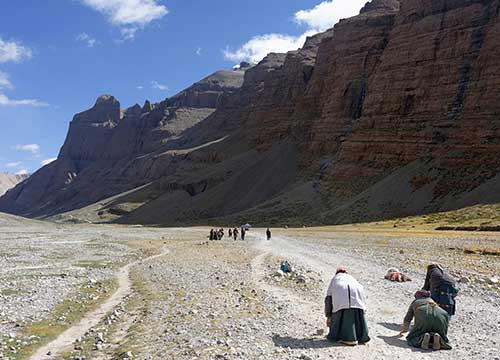








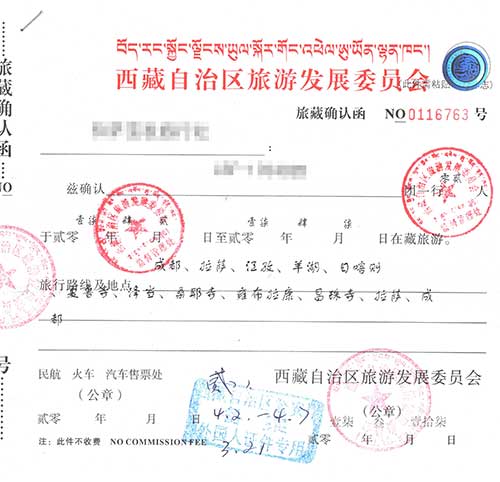




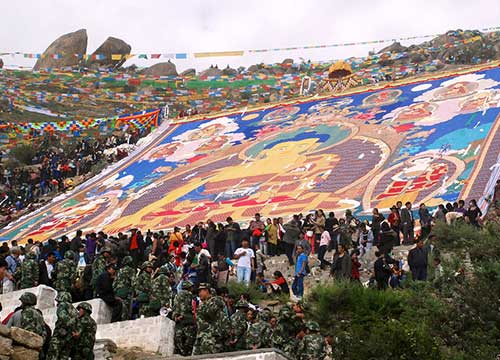
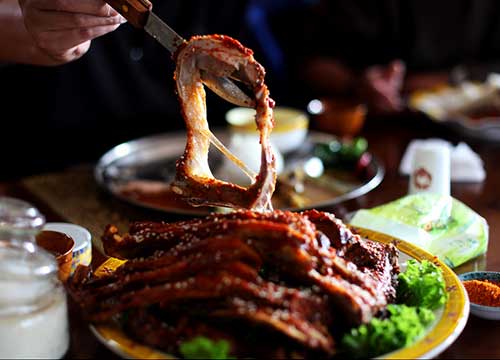
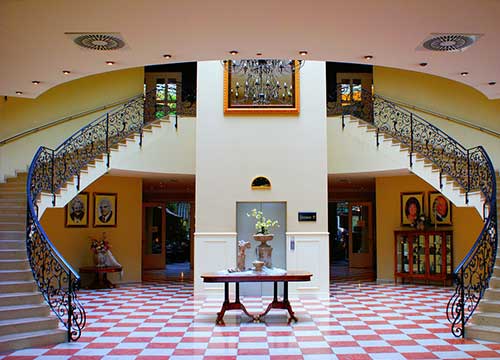

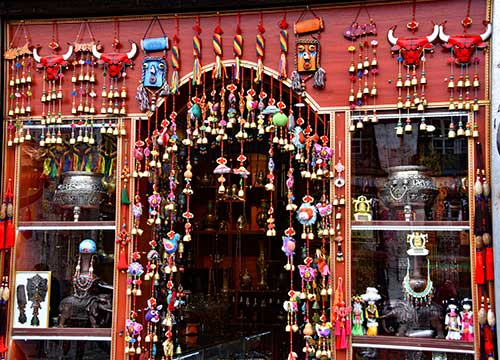
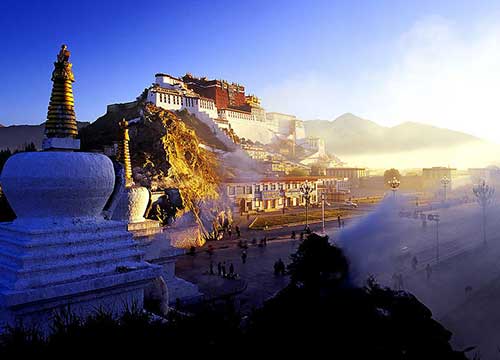
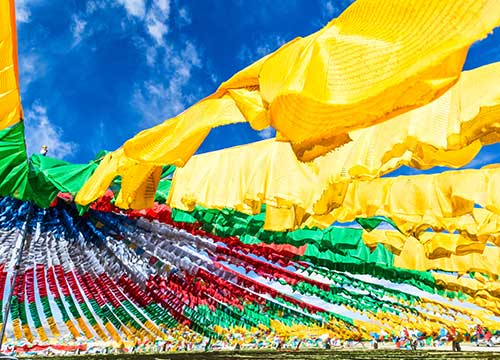

 Data in submission...
Data in submission...